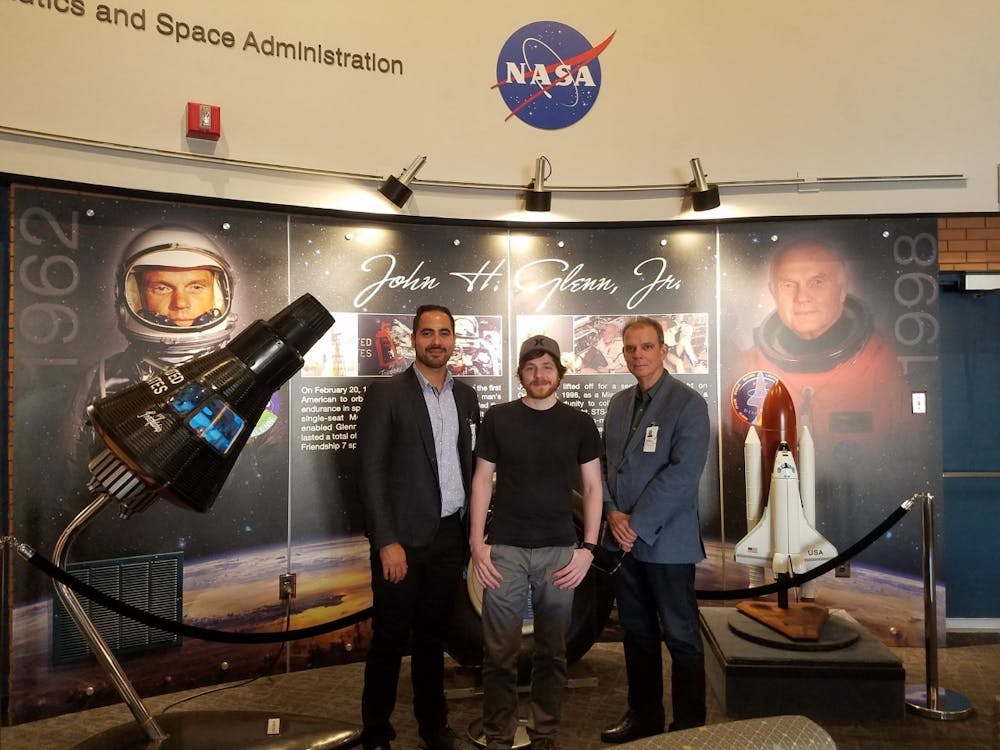When the rocket Antares launched earlier this month, there was an unlikely passenger onboard: melanin. It will circle the Earth for six months, exposed to the harsh attributes of space like ionizing radiation.
Upon its return to Earth, Radamés J.B. Cordero and his colleagues will perform a series of tests to answer two questions: Did the melanin shield radiation? Did it withstand the conditions in space?
Cordero, a research associate at the Bloomberg School of Public Health and the project lead, has reason to believe that it will. Melanin is a dark or brown pigment that is found in all forms of life, from animals to plants to fungi. The purified melanin that Cordero isolated to send to space was derived from the yeast Cryptococcus neoformans.
The aforementioned ionizing radiation refers to electromagnetic rays from the sun, like ultraviolet, gamma and X-rays. We, who roam the Earth, are partially shielded from the harmful effects of those rays because of Earth’s atmosphere. But for astronauts, ionizing radiation and particulate radiation — which involves sub-atomic particles like electrons and protons — are a real concern.
Both forms of radiation can damage DNA and protein or produce reactive oxygen species which can be toxic to cells. They can also damage electronic devices and interact with materials, like a spacesuit, to generate secondary radiation. As scientists plan trips to Mars and beyond, Cordero stressed that finding a lightweight, cheap, effective protective material is necessary.
Melanin may be the answer. Not only can it absorb electromagnetic radiation and dissipate it so that the energy is maintained in the pigment, but also it helps melanotic microorganisms like black fungi live in environments with high levels of solar radiation, such as Antarctica.
“We want to try to mimic that protective feature and use that information as we venture into space,” Cordero said in an interview with The News-Letter.
Although projects like Cordero’s are getting closer to elucidating the properties of melanin, some structural aspects of the pigment are still a mystery, according to Cordero. He noted that while there are some similarities between the fungal melanin that melanin that lends its color to human skin, there are significant differences as well.
“[Melanin] is a biomolecule that has been in nature for eons. The fact that it is found in all forms of life tells us that it is conserved and ancient,” he said. “It is an enigmatic molecule.”
Scientists have speculated about the radioprotective properties of fungal melanin since the late 1980s.
To put the various hypotheses to the test, the National Aeronautics and Space Administration (NASA) approached a couple of scientists, including Arturo Casadevall, one of the pioneers in identifying the protective characteristics of melanin against different forms of ionizing radiation. Casadevall is the principal investigator of the lab where Cordero works and a professor at the Bloomberg School of Public Health.
Once Cordero isolated melanin samples, they encountered a problem. The melanin could not be exposed to space in its powdery form. So Quigly Dragotakes, a graduate student, engineered a solution.
“We tried a couple ideas first, but eventually I tried embedding our melanin in a plastic polymer to end up with a solid brick that could be machined to the required specifications,” Dragotakes wrote in an email to The News-Letter.
A peculiar trait of the polymer substance which renders it even more useful is that the melanin can be easily separated from it. The polymer is soluble in a solvent that melanin does not dissolve in. This allows the Cordero and his colleagues to analyze the sample through microscopic, thermal and spectroscopic methods to test its ability to withstand space.
They will measure its shielding capacity based on the color of an indicator material placed under the melanin sample.
To generate a more conclusive data set, the team will send a biological replica at the beginning of next year. The replica will be placed at a different location, but all other conditions will be comparable to the current trial.
“Where [the samples] are exposed outside the ISS will determine if they will get more or less levels of radiation,” Cordero explained.
There are terrestrial applications of this research in addition to extraterrestrial ones. Melanin can potentially be integrated into biomaterials or used as a model to synthetically create protective materials. These can protect patients undergoing chemotherapy or for physicians who are exposed to high levels of radiation.
Currently, doctors like cardiologists who work in high-radiation environments wear lead aprons and radioprotective gear. In a survey of 1,600 interventional cardiologists, 42 percent reported orthopedic pain due to that heavy lead-based gear.
Depending on the shielding effectiveness of melanin, according to Cordero, it can be used to create a lightweight but protective material.
Melanin is also biocompatible, so humans and animals can ingest it. A 2012 study found that ingested melanin can line and protect the gastrointestinal tract. In the study, 80 percent of mice fed black mushrooms, which contain high levels of melanin, were protected from gastrointestinal syndrome when they were exposed to total body radiation. The protective effect was not observed in mice which were exposed to the same levels of radiation but fed white mushrooms.
Eventually, another layer that Cordero hopes to research in addition to the shielding effects of melanin is its ability to capture heat and serve as a bioconductor.
“Biology carries a lot of information, and I see beauty in that,” he said.





